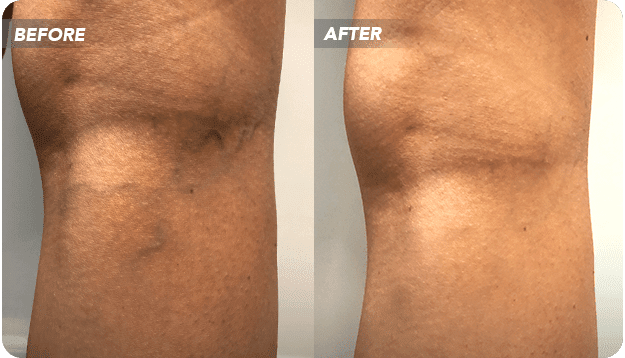Do you have a web-like cluster of blood vessels on the surface of your skin? Are these blood vessels accompanied by leg heaviness and general discomfort? These blood vessels are known as spider veins and they may be caused by underlying venous insufficiency.
Spider veins look pretty bad and they also lead to self-consciousness. But spider veins can also be symptomatic of underlying vein disease, which is why it’s crucial to find a reputable doctor to treat spider veins. You should, however, be careful about the vein doctor you choose.
Vein treatment is generally pretty simple, but there are vein doctors who may simply treat spider veins without diagnosing the root cause. In that case, your spider veins will simply return later. Furthermore, some vein doctors still use surgical options to treat spider veins and vein disease when it’s far more advisable to go for a minimally invasive treatment.
But how do you identify the best spider vein doctor? What distinguishes the best spider vein doctors from the rest. In this article, we show you how to choose the best spider vein doctor.

Board Certified Vein Doctor
Vein doctors — officially known as phlebologists — don’t need board certification to practice vein treatment. But board certification is the most objective guarantor of quality treatment possible. In order to get board-certified, vein doctors have to accomplish several complicated professional milestones and distinguish themselves.
As such, when you’re looking for vein doctors, you should filter your search by looking for board-certified vein doctors. If a vein doctor is board-certified, you can rest assured that they have a stellar reputation and they’ll be able to treat spider veins.
Physical Examination Before Spider Veins Treatment
It’s crucial to find a vein doctor who performs a thorough physical examination before the spider veins treatment. A physical exam helps the doctor determine the best course of action to treat spider veins.
Furthermore, the vein doctor should also run non-invasive imaging tests like a Doppler ultrasound. This will highlight the blood flow in your leg veins, which will help the doctor determine if you have venous insufficiency.
As mentioned earlier, spider veins are often symptomatic of underlying vein disease. Chronic venous insufficiency is a condition in which your vein valves malfunction, which causes blood to flow backward and pool within your leg veins. If the vein doctor simply treats symptomatic spider veins without treating the underlying disease, then the spider veins will simply return later.
That’s why your vein doctor must run a Doppler ultrasound test. If you have vein disease, the doctor will be able to formulate the treatment accordingly.

Minimally Invasive Treatment
In the past, vein doctors treated venous insufficiency with complex surgical procedures like vein ligation and venous bypass surgery. These procedures were extremely invasive, had a relatively low success rate, and a high risk of complications.
However, thanks to advancements in vein care and modern technology, vein doctors can treat spider veins and venous insufficiency with minimally invasive treatments. These procedures generally conclude within an hour, have an incredibly high success rate, have a negligible risk of side effects, and they don’t lead to downtime.
When looking for a spider vein doctor, make sure that they only provide minimally invasive treatments. If they recommend vascular surgery, you should look for another vein doctor.
Sclerotherapy
Sclerotherapy is the best procedure to treat spider veins. This procedure has been around for several decades and it’s always effective.
During the procedure, the vein doctor injects a medicine called sclerosant into your spider veins. The medicine fuses your vein walls, eventually turning them into scar tissues. The accumulated blood reroutes to healthier veins and spider veins gradually get absorbed by the body.
This procedure, however, only treats symptomatic spider veins and not the underlying venous insufficiency.
Radiofrequency Ablation
Radiofrequency ablation is the best procedure to treat spider veins if you’re suffering from venous insufficiency as well.
During the procedure, the vein doctor inserts a catheter into the diseased saphenous vein via an incision on the surface of your skin. Once the catheter is lodged in place, the vein doctor activates it to generate heat energy and disrupt the vein walls. The affected saphenous vein eventually collapses and the accumulated blood reroutes to healthier veins.
Endovenous Laser Ablation
Endovenous laser ablation is a procedure in which the vein doctor inserts a catheter with an attached laser fiber into the diseased saphenous vein. The catheter and laser fiber generate laser energy that disrupts and collapses the diseased vein. The accumulated blood reroutes to healthier veins and the affected saphenous vein eventually hardens and gets absorbed by the body.
VenaSeal
VenaSeal is a highly-effective new varicose vein treatment in which the vein doctor injects a medical adhesive into the diseased saphenous vein. The medical adhesive fuses the vein walls, essentially closing it down so the accumulated blood can flow into healthier veins. Over time, the closed vein hardens and gets absorbed by the body.
Compassionate Attitude
In addition to being highly-skilled, qualified, and using the latest minimally invasive treatments, a good vein doctor should also be compassionate and friendly. A compassionate vein doctor is far more likely to patiently listen to your concerns and formulate a treatment plan that’s specifically suited to your needs.
Where to Treat Spider Veins?
Do you live in or around New York, New Jersey, or San Diego? If so, you should treat spider veins at Vein Treatment Clinic. We have some of the country’s most highly-qualified board-certified vein doctors and we use the latest minimally-invasive treatments to diagnose and treat spider veins and the underlying venous insufficiency. For more information, please schedule an appointment with the best vein doctor today.








